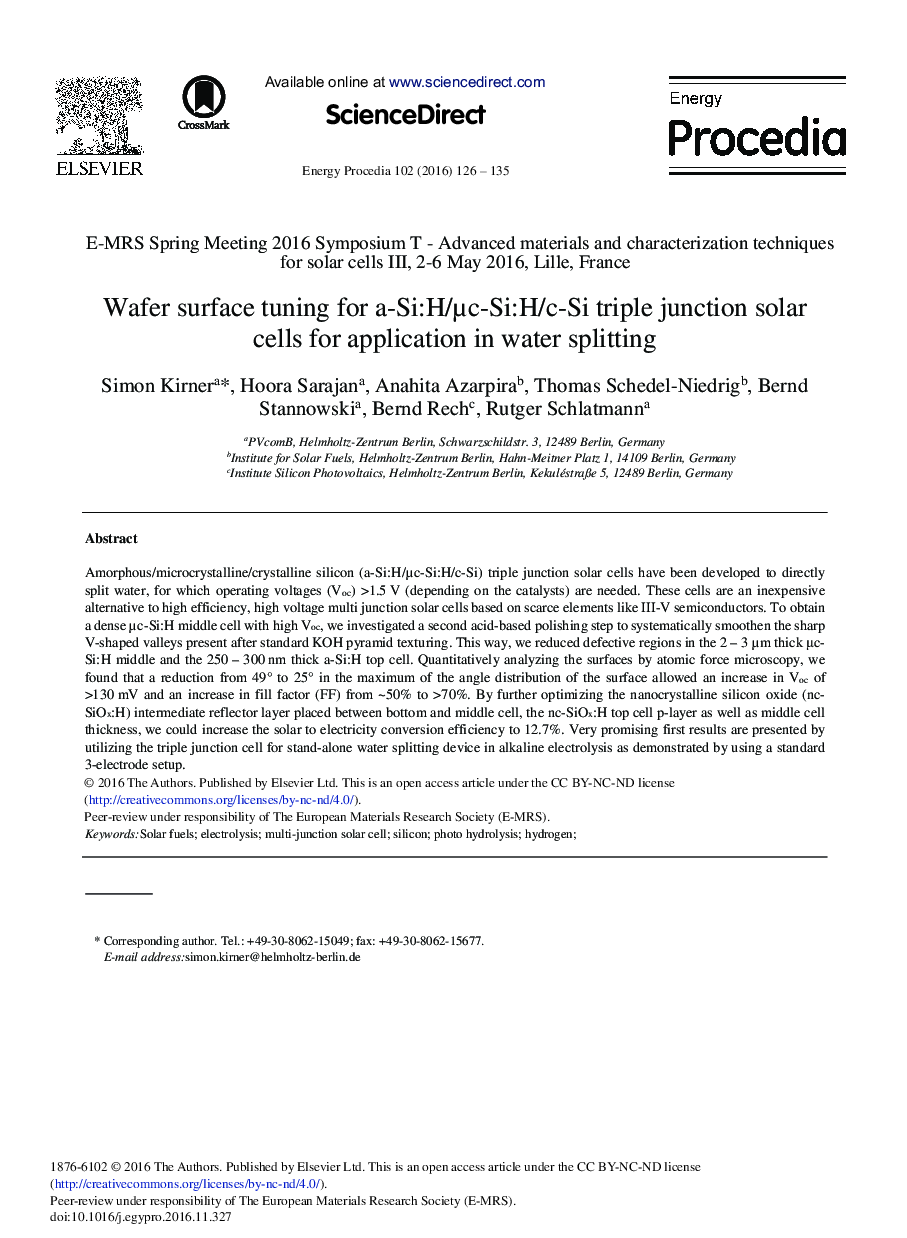| Article ID | Journal | Published Year | Pages | File Type |
|---|---|---|---|---|
| 5446064 | Energy Procedia | 2016 | 10 Pages |
Abstract
Amorphous/microcrystalline/crystalline silicon (a-Si:H/μc-Si:H/c-Si) triple junction solar cells have been developed to directly split water, for which operating voltages (Voc) >1.5 V (depending on the catalysts) are needed. These cells are an inexpensive alternative to high efficiency, high voltage multi junction solar cells based on scarce elements like III-V semiconductors. To obtain a dense μc-Si:H middle cell with high Voc, we investigated a second acid-based polishing step to systematically smoothen the sharp V-shaped valleys present after standard KOH pyramid texturing. This way, we reduced defective regions in the 2 - 3 μm thick μc-Si:H middle and the 250 - 300 nm thick a-Si:H top cell. Quantitatively analyzing the surfaces by atomic force microscopy, we found that a reduction from 49° to 25° in the maximum of the angle distribution of the surface allowed an increase in Voc of >130 mV and an increase in fill factor (FF) from â¼50% to >70%. By further optimizing the nanocrystalline silicon oxide (nc-SiOx:H) intermediate reflector layer placed between bottom and middle cell, the nc-SiOx:H top cell p-layer as well as middle cell thickness, we could increase the solar to electricity conversion efficiency to 12.7%. Very promising first results are presented by utilizing the triple junction cell for stand-alone water splitting device in alkaline electrolysis as demonstrated by using a standard 3-electrode setup.
Related Topics
Physical Sciences and Engineering
Energy
Energy (General)
Authors
Simon Kirner, Hoora Sarajan, Anahita Azarpira, Thomas Schedel-Niedrig, Bernd Stannowski, Bernd Rech, Rutger Schlatmann,
